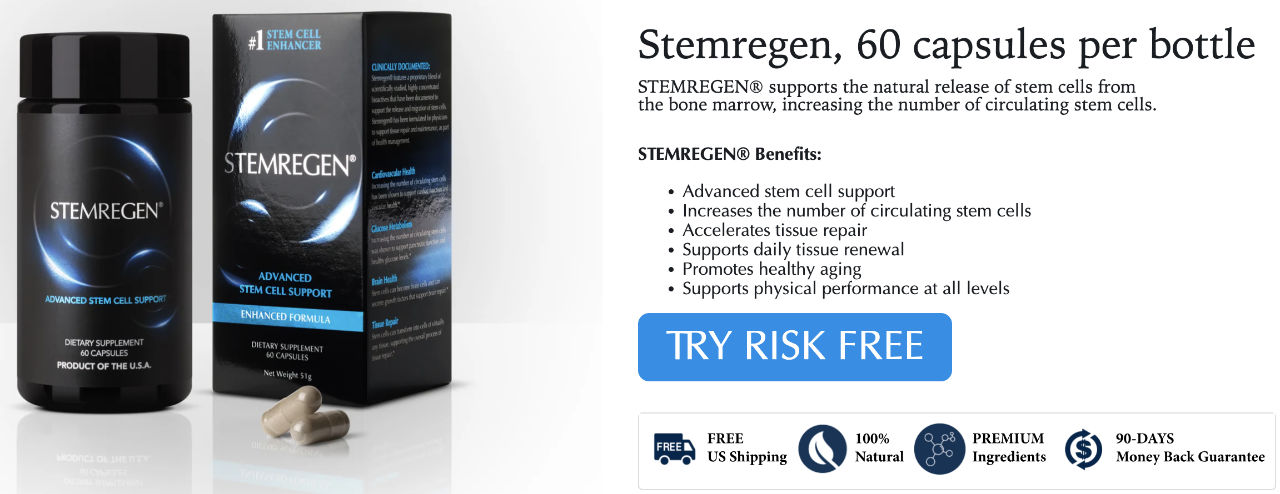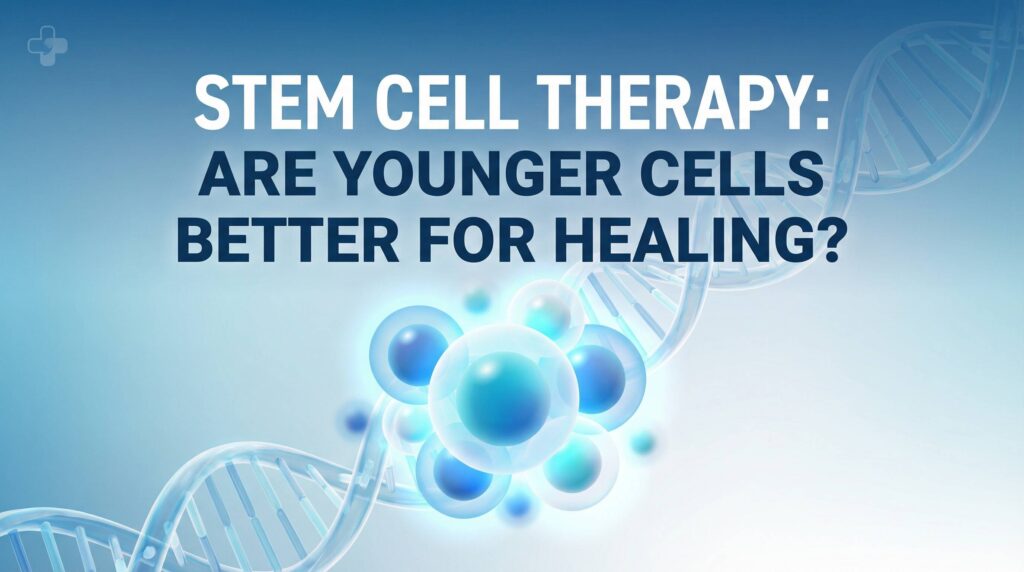What if the key to enhancing your body’s natural regenerative capabilities lies not in providing more oxygen, but in strategically limiting it?
This counterintuitive concept forms the foundation of intermittent hypoxia therapy, a rapidly emerging field that harnesses controlled periods of reduced oxygen availability to stimulate stem cell function and promote tissue regeneration.
Intermittent hypoxia (IH) represents a paradigm shift in our understanding of cellular adaptation and regenerative medicine.
Unlike the continuous oxygen deprivation associated with pathological conditions, intermittent hypoxia involves brief, controlled periods of reduced oxygen levels followed by normoxic recovery phases.
This precise modulation of oxygen availability triggers a cascade of beneficial cellular responses, particularly in stem cells, which serve as the body’s primary repair and regeneration system.
The scientific community has increasingly recognized that stem cells, the undifferentiated cells capable of developing into various specialized cell types, respond remarkably well to hypoxic conditions.
These responses include enhanced proliferation, improved survival rates, and increased differentiation potential. Moreover, intermittent hypoxia appears to activate specific molecular pathways that promote neuroprotection, tissue repair, and overall cellular resilience.
This article explores the multifaceted benefits of intermittent hypoxia for stem cells, examining the underlying mechanisms, clinical applications, and therapeutic potential of this innovative approach.
We will delve into how controlled oxygen deprivation can enhance various types of stem cells, from neural stem cells to hematopoietic progenitors, and discuss the implications for treating a wide range of medical conditions.
Understanding Intermittent Hypoxia: The Science Behind Controlled Oxygen Deprivation
Intermittent hypoxia fundamentally differs from chronic hypoxia in both its application and biological effects.
While chronic oxygen deprivation typically leads to cellular stress and pathological changes, intermittent hypoxia creates a controlled stress response that activates beneficial adaptive mechanisms. This distinction is crucial for understanding why IH can be therapeutic rather than harmful.
The concept of intermittent hypoxia emerged from observations of high-altitude training in athletes and the study of sleep-disordered breathing.
Researchers discovered that the pattern, duration, and intensity of oxygen deprivation determine whether the effects are beneficial or detrimental.
Low-dose intermittent hypoxia protocols, characterized by brief hypoxic episodes with adequate recovery periods, consistently demonstrate positive effects on cellular function and tissue regeneration [1].
The Dose-Response Relationship
The effectiveness of intermittent hypoxia follows a precise dose-response relationship. Low-dose IH protocols typically involve oxygen concentrations of 10-15% for periods ranging from a few minutes to several hours, depending on the specific application. These protocols activate beneficial cellular pathways without triggering the inflammatory responses associated with severe or prolonged hypoxia.
Research has shown that the balance between beneficial and harmful effects depends on several key factors:
- Severity of hypoxia: Moderate reductions in oxygen concentration (10-15% O2) provide optimal benefits
- Duration of hypoxic episodes: Brief exposures (5-30 minutes) are generally more beneficial than prolonged periods
- Recovery intervals: Adequate normoxic periods between hypoxic episodes are essential
- Total exposure time: Cumulative exposure should be carefully controlled to avoid adverse effects
- Frequency of treatment: Regular but not excessive exposure patterns yield the best results
Cellular Mechanisms of Hypoxic Adaptation
At the cellular level, intermittent hypoxia triggers a complex network of adaptive responses. The primary mediator of these responses is the hypoxia-inducible factor (HIF) pathway, a sophisticated cellular sensing system that detects changes in oxygen availability and initiates appropriate responses.
When oxygen levels decrease, HIF-1α and HIF-2α proteins become stabilized and translocate to the cell nucleus, where they activate the transcription of numerous genes involved in cellular adaptation. These genes encode proteins responsible for:
- Angiogenesis: Formation of new blood vessels to improve oxygen delivery
- Metabolic adaptation: Shift toward more efficient energy production pathways
- Cell survival: Enhanced resistance to oxidative stress and apoptosis
- Growth factor production: Increased synthesis of proteins that promote cell growth and repair
The intermittent nature of the hypoxic stimulus is particularly important because it allows cells to experience the benefits of HIF activation while avoiding the negative consequences of sustained hypoxia, such as excessive oxidative stress or metabolic dysfunction.
Stem Cell Responses to Intermittent Hypoxia: Enhanced Function and Regenerative Capacity
Stem cells demonstrate remarkable responsiveness to intermittent hypoxia, with multiple studies showing enhanced proliferation, improved survival, and increased differentiation potential under controlled hypoxic conditions.
These responses are not uniform across all stem cell types, but rather reflect the specific physiological roles and environmental niches of different stem cell populations.
Neural Stem Cells and Neuroplasticity
Neural stem cells (NSCs) and neural progenitor cells (NPCs) show particularly robust responses to intermittent hypoxia.
Research has demonstrated that hypoxia promotes stem cell proliferation, differentiation, and survival, while also promoting the pluripotency and directed differentiation of both embryonic stem cells and neural stem cells [2]. These effects have profound implications for neurological recovery and brain health.
The mechanisms underlying these beneficial effects involve multiple signaling pathways. Hypoxia increases the proliferation of neural stem cells by upregulating HIF-1α expression and activating the Wnt/β-catenin pathway.
Additionally, hypoxia-induced HIF-1α expression prevents neural stem cells from premature neuronal differentiation by activating neural repressor Hes1, which operates independently of Notch signaling.
Intermittent hypoxia also promotes neural stem cell proliferation through the upregulation of microRNA-21 (miR-21), an action that appears to be mediated by phosphatidylinositol 3-kinase (PI3K) signaling pathway activation. Furthermore, hypoxic exposure promotes the proliferation of neural progenitor cells via PI3K/protein kinase B (AKT)-dependent glycogen synthase kinase-3β signaling.
The temporal regulation of neural stem cell responses to hypoxia is particularly interesting. During early cortical development, the presence of HIF-1α prevents neural stem cells from producing differentiated progeny, helping maintain the stem cell pool.
However, during embryonic neural development, the effects of hypoxia on neural stem cells are temporally regulated, with hypoxia inhibiting differentiation and maintaining the undifferentiated state during early development, while inducing neural differentiation at later stages.
Hematopoietic Stem Cells and Immune Function
Hematopoietic stem and progenitor cells (HSPCs) represent another stem cell population that responds favorably to intermittent hypoxia. Clinical studies have shown that intermittent hypoxia training (IHT) modulates circulating hematopoietic stem and progenitor cells and augments cellular and humoral elements of innate immunity [3].
In a landmark study involving healthy adult men, researchers found that a 14-day intermittent hypoxia training program consisting of four 5-minute bouts per day of breathing 10% oxygen significantly affected HSPC mobilization. During acute intermittent hypoxia sessions, HSPC counts increased by 51% after the second hypoxia bout and by 19% after the fourth bout, demonstrating the immediate mobilizing effects of hypoxic exposure.
The study revealed several important findings about hematopoietic responses to intermittent hypoxia:
- Enhanced immune function: IHT enhanced innate immunity by mobilizing HSPCs, activating neutrophils, and increasing circulating complement and immunoglobulins
- Stem cell mobilization: The treatment mobilized hematopoietic progenitors from their bone marrow niches into peripheral circulation
- Temporal effects: While acute hypoxia increased HSPC counts, the levels fell 27% below baseline one week after completing the IHT program, suggesting a complex regulatory response
Hematopoietic stem cells naturally reside in hypoxic niches within the bone marrow, where oxygen concentrations are significantly lower than in peripheral tissues.
This hypoxic environment helps maintain stem cells in a quiescent but self-renewing state, and hypoxia maintains HSC pluripotency by suppressing NADPH oxidase activity.
Embryonic and Induced Pluripotent Stem Cells
Embryonic stem cells (ESCs) and induced pluripotent stem cells (iPSCs) also demonstrate enhanced function under intermittent hypoxic conditions.
Hypoxia promotes the pluripotency of human embryonic stem cells and maintains their self-renewal characteristics by promoting Notch activation. Additionally, hypoxia regulates self-renewal of human ESCs through HIF-2α and glycolytic sensors called C-terminal binding proteins.
Hypoxic preconditioning has been shown to enhance human ESC neural differentiation and cell survival by upregulating HIF-1α and HIF-2α signaling. This preconditioning approach represents a promising strategy for improving the therapeutic potential of stem cell-based treatments.
The effects of hypoxia on embryonic stem cells also involve modulation through mitogen-activated protein kinase (MAPK)/extracellular regulated protein kinase signaling pathways. These findings collectively suggest that hypoxia is necessary to maintain the pluripotency and self-renewal capacity of human embryonic stem cells, making it an important consideration for stem cell culture and therapeutic applications.
Growth Factors and Molecular Mechanisms: The Biochemical Foundation of Hypoxic Benefits
One of the most significant discoveries in intermittent hypoxia research is the upregulation of multiple growth and trophic factors that confer neuroprotection and promote neuroplasticity. These factors serve as the molecular mediators of many beneficial effects observed in stem cells exposed to controlled hypoxic conditions.
Key Growth Factors Upregulated by Intermittent Hypoxia
Research has identified several critical growth factors that are consistently upregulated in response to intermittent hypoxia [1]:
Brain-Derived Neurotrophic Factor (BDNF): This neurotrophin plays a crucial role in neuronal survival, growth, and synaptic plasticity. BDNF upregulation occurs through chemoafferent activation, triggering serotonin release and initiating cell signaling cascades that increase BDNF synthesis. The increased BDNF expression in motoneurons contributes to enhanced motor function and neuroplasticity.
Vascular Endothelial Growth Factor (VEGF): As a HIF-regulated protein, VEGF promotes angiogenesis and vascular development. The upregulation of VEGF under hypoxic conditions enhances blood vessel formation, improving oxygen and nutrient delivery to tissues. This is particularly important for supporting stem cell niches and facilitating tissue repair processes.
Erythropoietin (EPO): Another HIF-regulated protein, EPO traditionally known for its role in red blood cell production, also demonstrates neuroprotective properties. EPO upregulation contributes to enhanced cell survival and may play a role in stem cell mobilization and function.
Each of these growth factors is expressed in motoneurons and confers both neuroprotection and neuroplasticity, making them essential mediators of the beneficial effects of intermittent hypoxia on neural function and regeneration.
Signaling Pathways and Cellular Mechanisms
The molecular mechanisms underlying intermittent hypoxia benefits involve complex interactions between multiple signaling pathways:
HIF-Dependent Pathways: The hypoxia-inducible factor system serves as the primary oxygen-sensing mechanism in cells. Under hypoxic conditions, HIF-1α and HIF-2α proteins become stabilized and activate the transcription of genes involved in cellular adaptation, including those encoding VEGF and EPO.
PI3K/AKT Signaling: The phosphatidylinositol 3-kinase pathway plays a crucial role in cell survival and proliferation responses to hypoxia. This pathway mediates many of the pro-survival effects of intermittent hypoxia and contributes to enhanced stem cell function.
Wnt/β-Catenin Pathway: This signaling cascade is important for stem cell maintenance and proliferation. Hypoxia-induced activation of this pathway contributes to enhanced neural stem cell proliferation and maintenance of stemness characteristics.
Notch Signaling: The Notch pathway is involved in cell fate determination and stem cell maintenance. Hypoxia promotes Notch activation, which helps maintain the pluripotency of embryonic stem cells and regulates neural stem cell differentiation.
Metabolic Adaptations
Intermittent hypoxia also induces important metabolic adaptations that support stem cell function. These include:
Enhanced Glycolysis: Cells adapt to reduced oxygen availability by increasing their reliance on glycolytic metabolism, which can be more efficient under hypoxic conditions.
Improved Stress Resistance: Hypoxic preconditioning enhances cellular resistance to various forms of stress, including oxidative stress and metabolic perturbations.
Mitochondrial Adaptations: Controlled hypoxic exposure can improve mitochondrial efficiency and reduce oxidative stress, contributing to enhanced cellular function and longevity.
Temporal Dynamics of Molecular Responses
The timing of molecular responses to intermittent hypoxia is crucial for understanding its therapeutic potential. Acute responses typically involve the rapid stabilization of HIF proteins and activation of immediate early genes. Chronic adaptations include sustained changes in gene expression patterns, metabolic enzyme activities, and cellular stress resistance mechanisms.
The intermittent nature of the hypoxic stimulus allows cells to experience the benefits of these adaptive responses while avoiding the potential negative consequences of sustained hypoxia, such as excessive oxidative stress or metabolic dysfunction. This temporal pattern is essential for maximizing therapeutic benefits while minimizing potential risks.
Clinical Applications and Therapeutic Potential
The growing understanding of intermittent hypoxia benefits for stem cells has opened new avenues for therapeutic applications across multiple medical disciplines. The ability to enhance stem cell function through controlled oxygen modulation offers promising treatment options for conditions that have traditionally been difficult to address.
Neurological Disorders and Brain Injury
Spinal Cord Injury: One of the most promising applications of intermittent hypoxia therapy is in the treatment of spinal cord injuries. Research has shown that low-dose intermittent hypoxia can improve both respiratory and nonrespiratory motor function following spinal injury [1]. The therapy works by upregulating growth factors in motoneurons and promoting neuroplasticity, which can help restore lost motor function.
Clinical trials have demonstrated that intermittent hypoxia protocols can enhance breathing capacity and motor function in individuals with cervical spinal injuries. The treatment appears to activate dormant neural pathways and promote the formation of new connections, leading to functional improvements that were previously thought impossible.
Amyotrophic Lateral Sclerosis (ALS): Intermittent hypoxia shows potential as a therapeutic intervention for ALS, a devastating neurodegenerative disease. The upregulation of neuroprotective factors such as BDNF and the enhancement of motor neuron function may help slow disease progression and improve quality of life for patients.
Stroke Recovery: The neuroprotective and neuroplasticity-promoting effects of intermittent hypoxia make it a candidate therapy for stroke recovery. By enhancing neural stem cell function and promoting the formation of new neural connections, IH therapy may help improve functional outcomes following stroke.
Hypoxic-Ischemic Brain Injury: Neural stem cell-based treatments enhanced by intermittent hypoxia conditioning show promise for treating hypoxic-ischemic brain injury, which is an important cause of morbidity and mortality in both adults and newborns [2].
Immune System Enhancement
The effects of intermittent hypoxia on hematopoietic stem cells suggest potential applications in immunotherapy and immune system enhancement [3]. The ability to mobilize hematopoietic progenitors and augment innate immunity could be valuable for:
Cancer Treatment Support: Enhancing immune function during cancer treatment could improve treatment outcomes and reduce complications from immunosuppression.
Autoimmune Disorders: Modulating immune cell populations through controlled stem cell mobilization might offer new approaches to treating autoimmune conditions.
Age-Related Immune Decline: As the immune system weakens with age, intermittent hypoxia therapy could help maintain or restore immune function in elderly populations.
Regenerative Medicine Applications
Tissue Engineering: The enhanced proliferation and differentiation potential of stem cells under intermittent hypoxic conditions could improve the success of tissue engineering approaches. Hypoxic preconditioning of stem cells before transplantation may enhance their survival and integration into host tissues.
Wound Healing: The promotion of angiogenesis and cellular proliferation through intermittent hypoxia could accelerate wound healing processes, particularly in chronic wounds that have failed to heal through conventional treatments.
Organ Transplantation: Hypoxic preconditioning of donor organs or recipient tissues might improve transplantation outcomes by enhancing cellular resilience and promoting tissue repair mechanisms.
Athletic Performance and Recovery
Beyond therapeutic applications, intermittent hypoxia has established applications in sports medicine and athletic performance enhancement. Athletes have long used altitude training and hypoxic chambers to improve performance, and the understanding of stem cell responses to hypoxia provides new insights into these benefits.
Enhanced Recovery: The upregulation of growth factors and improved cellular repair mechanisms may accelerate recovery from intense training or injury.
Improved Endurance: The metabolic adaptations and enhanced oxygen utilization efficiency resulting from intermittent hypoxia can improve athletic endurance and performance.
Injury Prevention: The enhanced cellular resilience and stress resistance developed through hypoxic conditioning may reduce the risk of training-related injuries.
Aging and Longevity
The neuroprotective and regenerative effects of intermittent hypoxia suggest potential applications in anti-aging medicine. The enhancement of stem cell function and the upregulation of protective factors could help maintain tissue function and delay age-related decline.
Cognitive Function: The promotion of neuroplasticity and neuroprotection may help maintain cognitive function and reduce the risk of age-related cognitive decline.
Tissue Maintenance: Enhanced stem cell function could help maintain tissue integrity and function throughout the aging process.
Stress Resistance: The improved cellular stress resistance developed through intermittent hypoxia conditioning may contribute to increased longevity and healthspan.
Safety Considerations and Implementation Protocols
While intermittent hypoxia offers significant therapeutic potential, proper implementation requires careful attention to safety protocols and dosing parameters. The distinction between beneficial low-dose intermittent hypoxia and potentially harmful high-dose exposure is crucial for safe and effective treatment.
Distinguishing Therapeutic from Pathological Hypoxia
The key to safe intermittent hypoxia therapy lies in understanding the dose-response relationship. Research has clearly demonstrated that low-dose intermittent hypoxia protocols provide benefits without detectable pathology, while high-dose protocols can cause harmful effects even while retaining some benefits [1].
Safe Parameters for Low-Dose IH:
- Oxygen concentrations: 10-15% (compared to 21% in normal air)
- Episode duration: 5-30 minutes per session
- Recovery periods: Adequate normoxic intervals between hypoxic episodes
- Frequency: Daily to several times per week, depending on the application
- Total exposure: Carefully controlled cumulative exposure time
Contraindications and Risk Factors:
- Severe cardiovascular disease
- Uncontrolled hypertension
- Severe respiratory disorders
- Pregnancy (unless specifically indicated and monitored)
- Certain medications that affect oxygen transport or utilization
Monitoring and Assessment
Proper implementation of intermittent hypoxia therapy requires comprehensive monitoring to ensure safety and effectiveness:
Physiological Monitoring:
- Oxygen saturation levels (pulse oximetry)
- Heart rate and blood pressure
- Respiratory rate and pattern
- Subjective symptoms and tolerance
Laboratory Assessments:
- Complete blood count to monitor hematopoietic responses
- Inflammatory markers to detect any adverse reactions
- Growth factor levels when feasible
- Stem cell markers in research settings
Functional Assessments:
- Motor function tests for neurological applications
- Cognitive assessments for brain-related treatments
- Exercise capacity for athletic applications
- Quality of life measures for chronic conditions
Implementation Protocols
Clinical Settings: In medical environments, intermittent hypoxia therapy should be administered under professional supervision with appropriate monitoring equipment. Protocols should be individualized based on patient condition, treatment goals, and response to therapy.
Research Applications: For research purposes, standardized protocols help ensure reproducibility and safety. Common research protocols involve controlled hypoxic chambers or breathing circuits that can precisely regulate oxygen concentrations.
Athletic Training: In sports applications, altitude training facilities or hypoxic training devices can provide controlled intermittent hypoxia exposure. These applications typically involve longer exposure periods but less severe hypoxia than medical protocols.
Future Directions and Research Opportunities
The field of intermittent hypoxia and stem cell research continues to evolve rapidly, with numerous opportunities for advancement and clinical translation.
Emerging Research Areas
Personalized Hypoxia Protocols: Future research may develop individualized treatment protocols based on genetic factors, baseline health status, and specific therapeutic goals. Pharmacogenomic approaches could help predict individual responses to hypoxic therapy.
Combination Therapies: Investigating the synergistic effects of intermittent hypoxia with other therapeutic modalities, such as stem cell transplantation, growth factor therapy, or pharmaceutical interventions, could enhance treatment outcomes.
Biomarker Development: Identifying reliable biomarkers for monitoring treatment response and predicting therapeutic outcomes would improve the precision and safety of intermittent hypoxia therapy.
Mechanistic Studies: Deeper understanding of the molecular mechanisms underlying hypoxic benefits could lead to more targeted and effective therapeutic approaches.
Technological Advances
Precision Delivery Systems: Development of more sophisticated hypoxic delivery systems that can provide precise control over oxygen concentrations, timing, and individual response monitoring.
Wearable Technology: Integration of wearable devices for continuous monitoring of physiological responses during hypoxic therapy could improve safety and optimize treatment protocols.
Artificial Intelligence: Machine learning approaches could help optimize treatment protocols, predict individual responses, and identify the most effective hypoxic parameters for specific conditions.
Clinical Translation Challenges
Regulatory Pathways: Establishing clear regulatory frameworks for intermittent hypoxia therapy as a medical treatment will be essential for clinical adoption.
Standardization: Developing standardized protocols and outcome measures will facilitate clinical trials and treatment comparisons.
Training and Education: Healthcare providers will need specialized training in intermittent hypoxia therapy administration and monitoring.
Cost-Effectiveness: Demonstrating the economic benefits of intermittent hypoxia therapy compared to conventional treatments will be important for healthcare system adoption.
Conclusion
Intermittent hypoxia represents a paradigm shift in our understanding of cellular adaptation and regenerative medicine. The ability to enhance stem cell function through controlled oxygen modulation offers unprecedented opportunities for treating a wide range of medical conditions, from neurological disorders to immune dysfunction.
The research clearly demonstrates that low-dose intermittent hypoxia can safely and effectively enhance stem cell proliferation, survival, and differentiation while upregulating crucial growth factors that promote neuroprotection and tissue repair. These effects are mediated through well-characterized molecular pathways involving HIF signaling, growth factor upregulation, and metabolic adaptations.
The therapeutic potential of intermittent hypoxia extends across multiple medical disciplines, offering hope for conditions that have traditionally been difficult to treat. From spinal cord injury recovery to immune system enhancement, the applications continue to expand as our understanding of the underlying mechanisms deepens.
However, the success of intermittent hypoxia therapy depends critically on proper implementation, careful attention to dosing parameters, and appropriate safety monitoring. The distinction between beneficial low-dose protocols and potentially harmful high-dose exposure cannot be overstated.
As research in this field continues to advance, we can expect to see more refined protocols, better understanding of individual variation in response, and expanded clinical applications. The integration of intermittent hypoxia therapy into mainstream medicine represents an exciting frontier in regenerative medicine and cellular therapeutics.
The future of intermittent hypoxia therapy lies in personalized medicine approaches that can optimize treatment protocols for individual patients while maintaining the highest standards of safety and efficacy. With continued research and development, this innovative therapeutic modality has the potential to transform the treatment of numerous medical conditions and improve quality of life for countless patients.
References
[1] Dale, E. A., Ben Mabrouk, F., & Mitchell, G. S. (2014). Unexpected Benefits of Intermittent Hypoxia: Enhanced Respiratory and Nonrespiratory Motor Function. Physiology, 29(1), 39-48. https://pmc.ncbi.nlm.nih.gov/articles/PMC4073945/
[2] Li, G., Liu, J., Guan, Y., & Ji, X. (2021). The role of hypoxia in stem cell regulation of the central nervous system: From embryonic development to adult proliferation. CNS Neuroscience & Therapeutics, 27(12), 1446-1457. https://pmc.ncbi.nlm.nih.gov/articles/PMC8611781/
[3] Serebrovskaya, T. V., Nikolsky, I. S., Nikolska, V. V., Mallet, R. T., & Ishchuk, V. A. (2011). Intermittent hypoxia mobilizes hematopoietic progenitors and augments cellular and humoral elements of innate immunity in adult men. High Altitude Medicine & Biology, 12(3), 243-252. https://pmc.ncbi.nlm.nih.gov/articles/PMC3186684/



